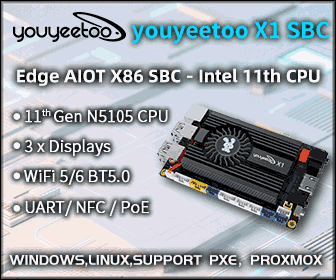AsiaRF AP7620-MPE-1 OpenWrt WiFi Router mini PCIe Card is Made for Computers and Embedded Systems
There are many mini PCIe WiFi modules on the market, but what AsiaRF provides with AP7620-MPE-1 is a little different, as it’s a router based on Mediatek MT7620A fitted into a mini PCIe card to be plugged inside a computer or embedded system. AP7620-MPE-1 mini PCIe card specifications: SoC – Mediatek MT7620A MIPS 24KEc CPU @ 580MHz with 2T2R WiFi 802.11 b/g/n (but board only supports 1×1) 802.11ac WiFI Chipset – Mediatek MT7612E AC1200 chipset limited to 433 Mbps [Changed to MT7610E chipset @ 433 Mbps] System Memory – 64 or 128MB DDR2 Storage – 8 or 16MB SPI flash WiFI features Security: 64/128-bit WEP, TKIP, WPA, WPA2, AES; 802.1X Authentication with RADIUS Client Multi-mode support: Access Point/Client mode Support Multiple SSIDs mini PCIe interface with USB2.0 to Ethernet, UART, 8 GPIOs, 1.5V, 3.3V and ground Dimensions – 60 x 41.5 mm (bigger than standard mini card: 50.95 x 30 […]





